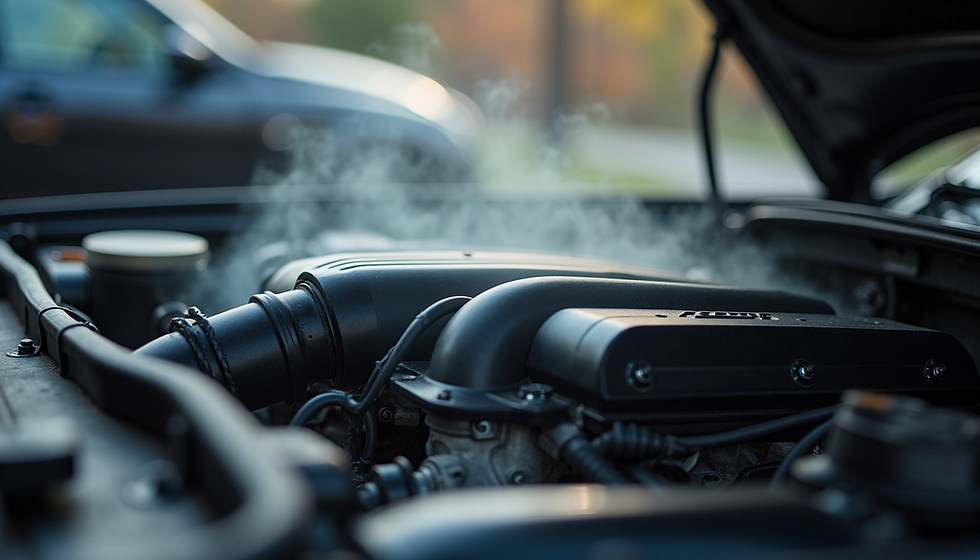Dealing with Air in Your Car Radiator
- Barossa Radiators & AutoCare
- Nov 3
- 3 min read
When you drive, your vehicle’s cooling system keeps the engine at the right temperature. Sometimes, air can get trapped inside the cooling system. This causes problems that affect your car’s performance. I will explain how to identify and fix this issue. You will learn practical steps to keep your car running smoothly.
Understanding the Air in Car Radiator Issue
Air trapped in the cooling system can cause overheating. It stops coolant from circulating properly. This leads to hot spots in the engine. You might notice the temperature gauge rising or the heater not working well. The engine may also make strange noises.
Air pockets reduce the cooling system’s efficiency. This can cause damage to the radiator, hoses, and engine parts. If you ignore the problem, it can lead to costly repairs. It is important to act quickly when you suspect air in the system.
How to Detect Air in Your Car Radiator Issue
Look for these signs to detect air in your radiator:
Engine temperature rises quickly.
Heater blows cold air even when turned on.
Coolant level drops without visible leaks.
Bubbling or gurgling sounds from the radiator or heater core.
Engine runs rough or stalls.
Check the coolant reservoir when the engine is cold. If the level is low, top it up with the correct coolant mix. Then, start the engine and watch the temperature gauge. If it climbs fast or fluctuates, air may be trapped inside.

Steps to Remove Air from Your Car Radiator
You can remove air from the cooling system by bleeding it. Follow these steps carefully:
Park the car on a level surface and turn off the engine.
Open the radiator cap when the engine is cold.
Locate the bleed valve on the radiator or thermostat housing. Not all cars have one.
Start the engine and let it idle.
Open the bleed valve slowly to release trapped air. You will hear a hissing sound.
Close the valve once coolant starts to flow steadily without bubbles.
Top up the coolant in the reservoir as needed.
Replace the radiator cap securely.
Monitor the temperature gauge during a short test drive.
If your car does not have a bleed valve, you can try the following method:
With the radiator cap off, turn the heater on to maximum heat.
Gently rev the engine to about 2000 RPM for a few minutes.
This helps push air bubbles out through the radiator neck.
Keep topping up the coolant as the level drops.
Replace the cap once no more bubbles appear.
Always use the correct coolant type for your vehicle. Check your owner’s manual for specifications.
When to Seek Professional Help
If you cannot remove the air or the problem returns, get expert help. Persistent air in the cooling system may indicate:
A leak in the radiator or hoses.
A faulty radiator cap.
A blown head gasket.
A damaged water pump.
These issues require professional diagnosis and repair. Contact a trusted local service like Barossa Radiators & AutoCare for expert assistance. They offer thorough cooling system inspections and repairs to keep your vehicle safe.

Preventing Air from Entering Your Cooling System
Prevent air from entering your cooling system by following these tips:
Check coolant levels regularly.
Use the correct coolant mixture.
Replace old or damaged radiator caps.
Inspect hoses for cracks or leaks.
Flush the cooling system as recommended by the manufacturer.
Avoid opening the radiator cap when the engine is hot.
Regular maintenance helps avoid air pockets and overheating. It also extends the life of your radiator and engine.
Keeping Your Vehicle Cool and Reliable
Dealing with air in your car radiator is essential for safe driving. Follow the steps to detect and remove air. Maintain your cooling system to prevent future problems. If you need help, trust local experts like Barossa Radiators & AutoCare. They provide reliable service to keep your vehicle running smoothly.
Stay proactive with your vehicle’s cooling system. This protects your engine and ensures your car performs well on every trip.
.png)



Comments